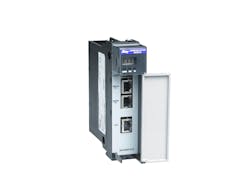Connecting Controllers from Different Vendors
Over the years I’ve been on numerous plant tours and one thing that always stood out to me was the variety of technologies used from different automation suppliers. Integrating these technologies has become much easier than it was 10 or 15 years ago due to the rise of open platform software and interoperability standards groups like OPC. But the fact that manufacturing facilities were willing to put up with the headaches of integrating disparate technologies — even when it was difficult and costly to do so — speaks volumes to their desire to use what they saw as the best equipment for their needs rather than opting for a single-vendor approach.
Given this reality, some industry suppliers have focused on supplying products designed to ease the integration of technologies from different suppliers. One of the newest releases of this type comes from Molex, which has upgraded the firmware on its SST Ethernet communication module to support Siemens industrial Ethernet protocol, thus enabling the connection of Rockwell Automation’s ControlLogix PLCs to Siemens’ Simatic controllers (including the S5, S7-1200, S7-200, S7-300 and S7-400), Simotion motion controllers, RFID and barcode readers, Sinamics variable frequency drives and Sinumerik CNC systems.
The firmware update (which supports 32- and 64-bit platforms in Windows 7) reportedly enables users to simultaneously manage communication in client and server modes to allow the SST module to read/write data and receive unsolicited data from Siemens controllers. The protocol supports various process data types including: M, DB, A, E, T, Z with support for up to 127 TCP connections.
The SST Ethernet communication module includes an Ethernet port and two serial ports for simultaneously running protocols, with the module serving as a stand-alone gateway between communication ports. George Kairys, product manager, Molex, says this enables users to read data from a serial Modbus slave and write to a Siemens S7-300 PLC via the industrial Ethernet port.
Molex configuration software allows for CIP path generation for bridged or routed connections to remote SST Ethernet communication modules, meaning that, regardless of the location of the SST module in the network architecture, users can connect to the module remotely to a local or a remote chassis.
Kairys adds that the SST communication modules include an add-on profile to interface with the RSLogix 5000 programming environment and share I/O process data with Logix processor memory without writing ladder logic, using PLC memory, or increasing PLC scan time. “Using flexible chipset technology provides a software configurable module, with no need to set specific jumpers for specific physical layer configurations, no jumpers to lose, no jumpers to misconnect and no additional manuals required,” he says.
About the Author
David Greenfield, editor in chief
Editor in Chief

Leaders relevant to this article:
